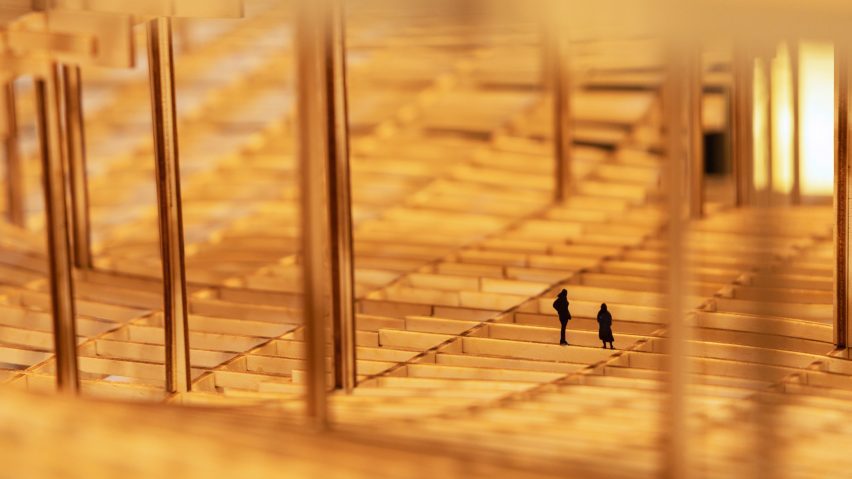
Time Space Existence show in Venice spotlights solutions for a planet under pressure
Promotion: prefabricated folding pods for housing displaced people are among the projects on display at the European Cultural Centre's (ECC) biennial architecture exhibition that opened in Venice this month.
Titled Time Space Existence, the group show presents work by architects, designers, artists, academics and photographers from 52 different countries that have been created in response to the climate emergency.
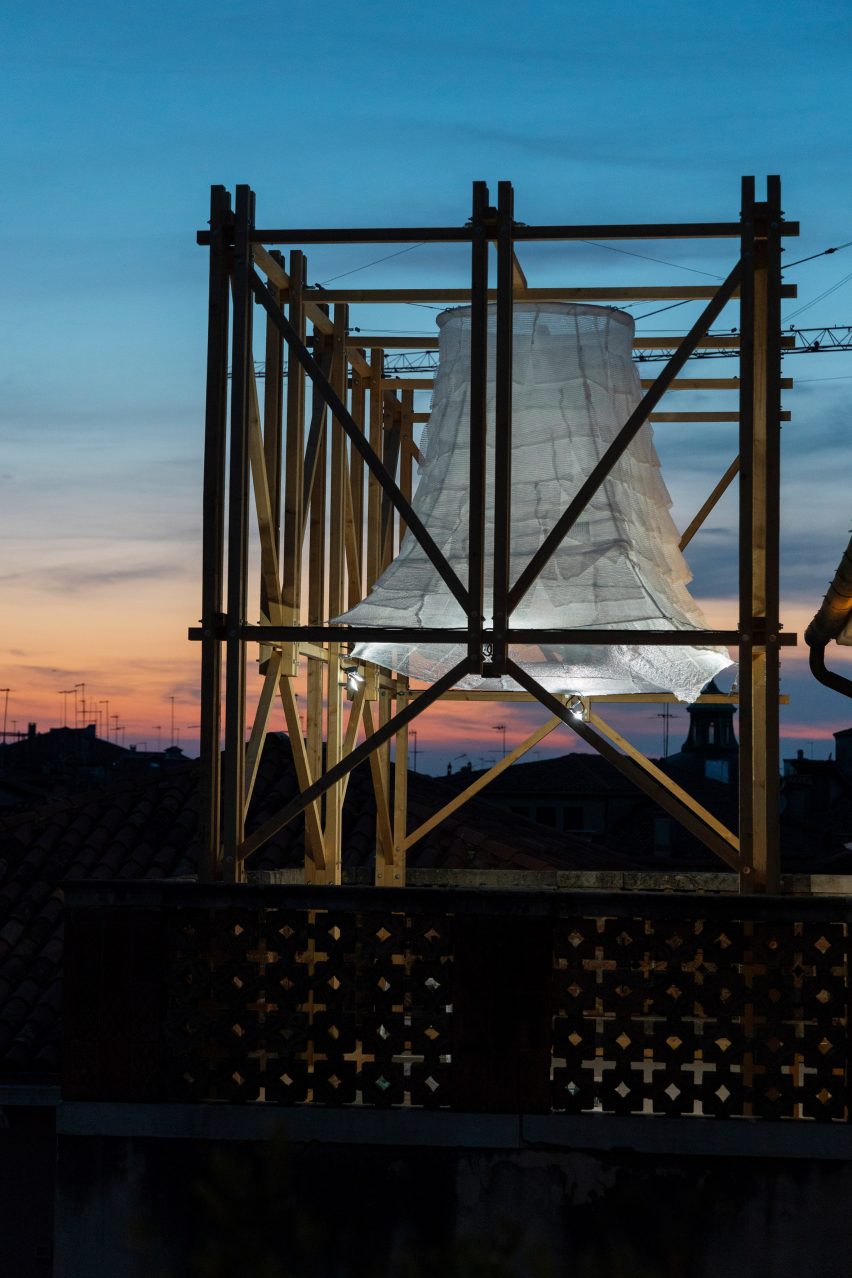
The 217 projects presented explore a variety of areas of focus, from the environment and urban landscape to the unfolding conversations on innovation, reuse, community and inclusion.
In response to climate change, exhibited projects investigate new technologies and construction methods that reduce energy consumption through circular design and develop innovative, organic and recycled building materials.
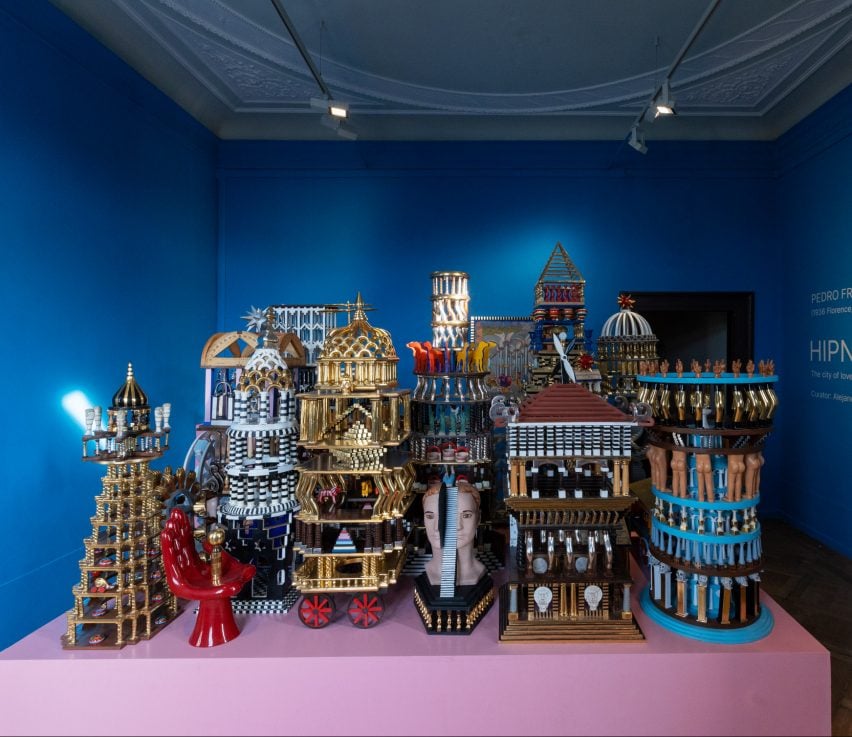
Participants also address social justice by presenting living solutions envisioned for displaced communities and minorities, while others examine the tensions between the built urban environment and the nature surrounding it, identifying opportunities for coexistence.
For example, the Norman Foster Foundation (NFF) and Holcim present the Essential Homes Research Project, a proposal to provide displaced people with safe, comfortable and dignified homes.
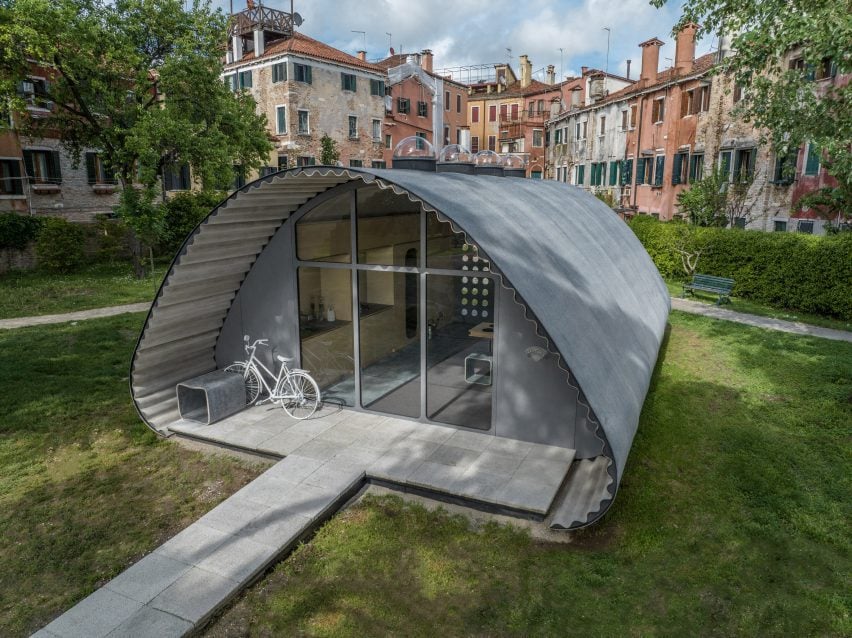
Designed by the Norman Foster Foundation and built with Holcim sustainable solutions, the project opens the conversation on how to make sustainable buildings accessible to everyone.
Architects Rafi Segal and Susannah Drake examine the existential threat that climate change poses on communities in Miami, studying the legacy of racial segregation in South Florida.
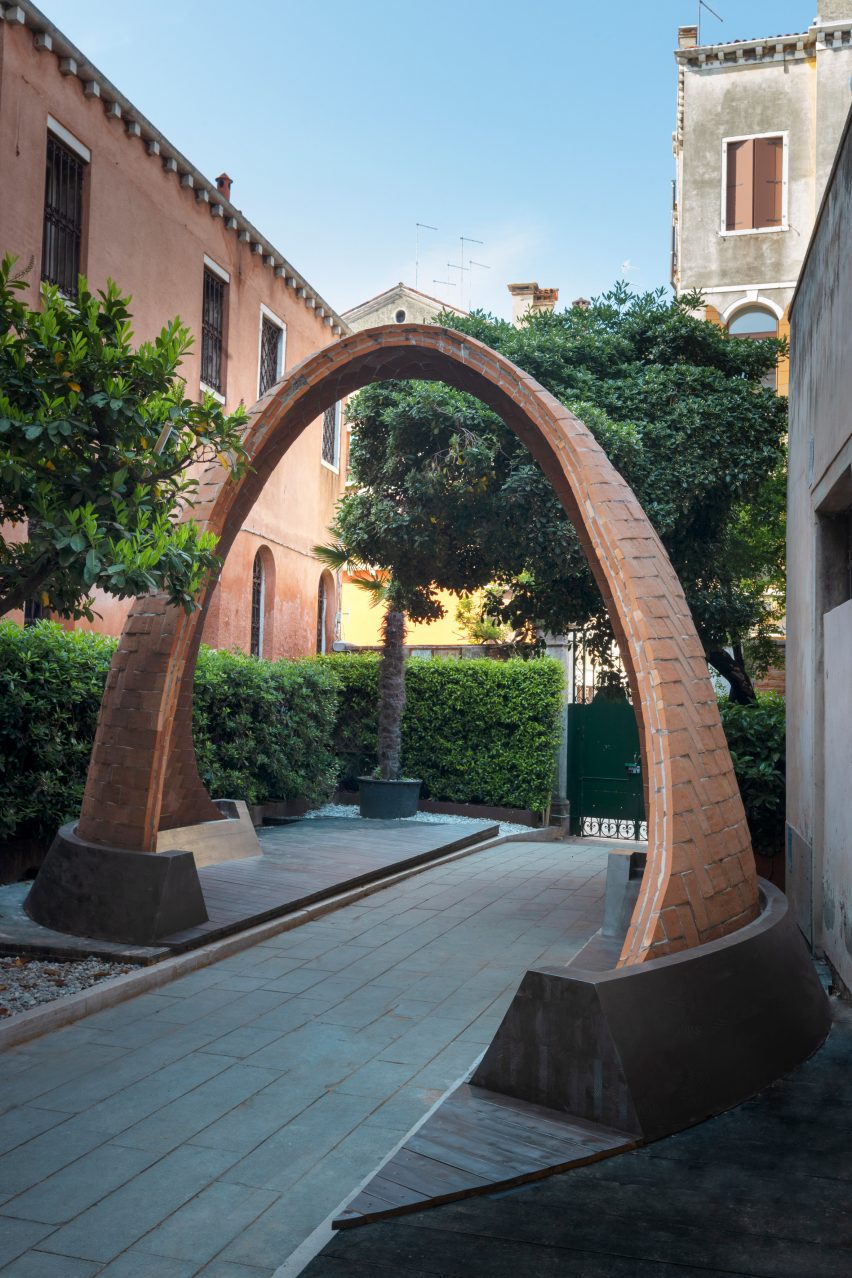
To tackle the issue of people displacement due to political reasons or natural disasters, architecture studio Hariri & Hariri have designed a prefabricated folding POD that is affordable and secure, whereas the Civic Data Design Lab at MIT collaborated with the United Nations World Food Programme (WFP) and the Migration Policy Institute (MPI) to outline interactive visualisations that illustrate critical findings about the root causes of migration.
Also on show is Transpecies Design by Adrian Parr at the Univeristy of Oregon, which is described as an investigation into "an other-than-anthropocentric approach to regenerating, restoring, reinvigorating and replenishing the natural environment".
Rather than focusing the design goal on the human experience, Parr's project takes into account the relationship between plants, humans and animals when establishing the end design goal.
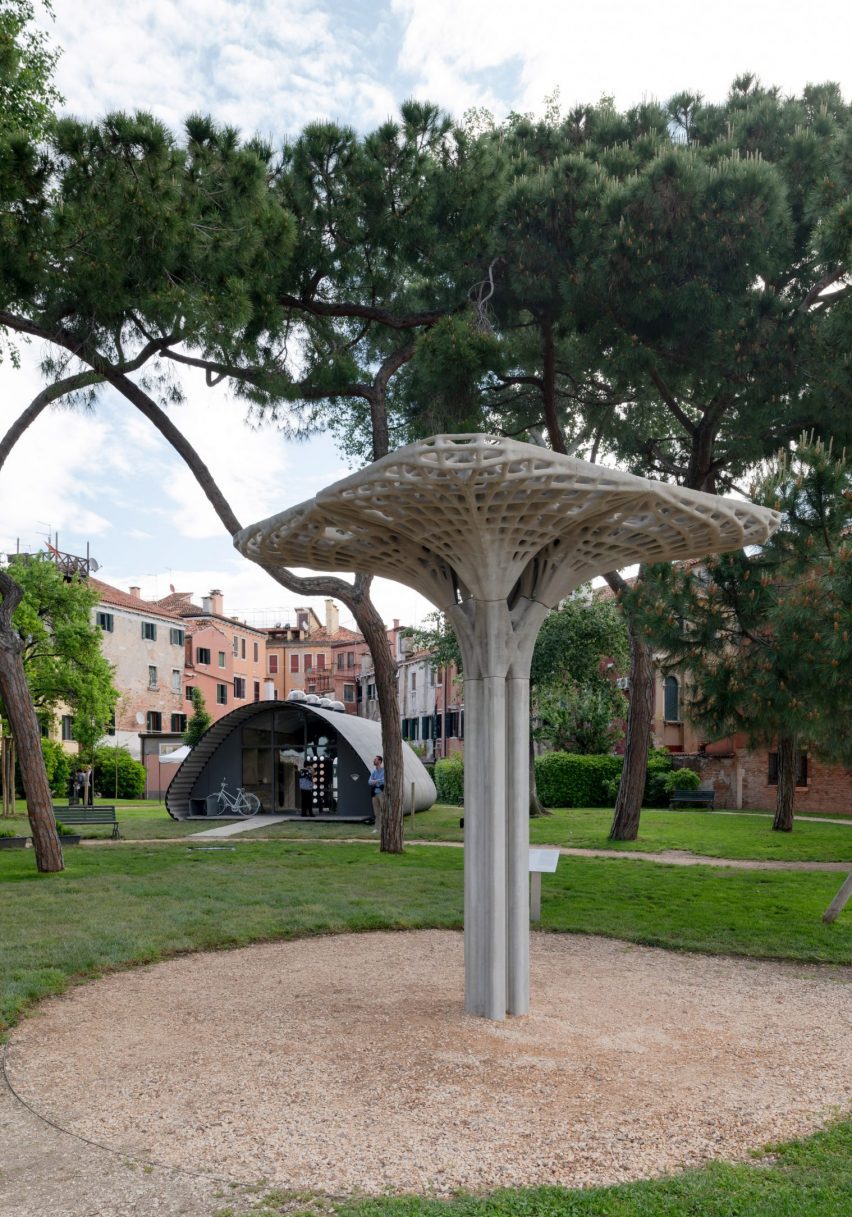
Addressing the need to drastically reduce resource consumption, emissions and waste in the construction industry, the University of Stuttgart's filigree concrete structures demonstrate how lightweight constructions can contribute to the decarbonisation of the building industry while ETH Block Research Group in collaboration with Digital Building Technology, explore on-site prefabrication using by-product material.
Also on display is a self-supporting vault construction technique developed by Princeton University's Form Finding Lab and the University of Bergamo. Named the Angelus Novus Vault, the piece aimed to demonstrate "new possibilities for sustainable construction".
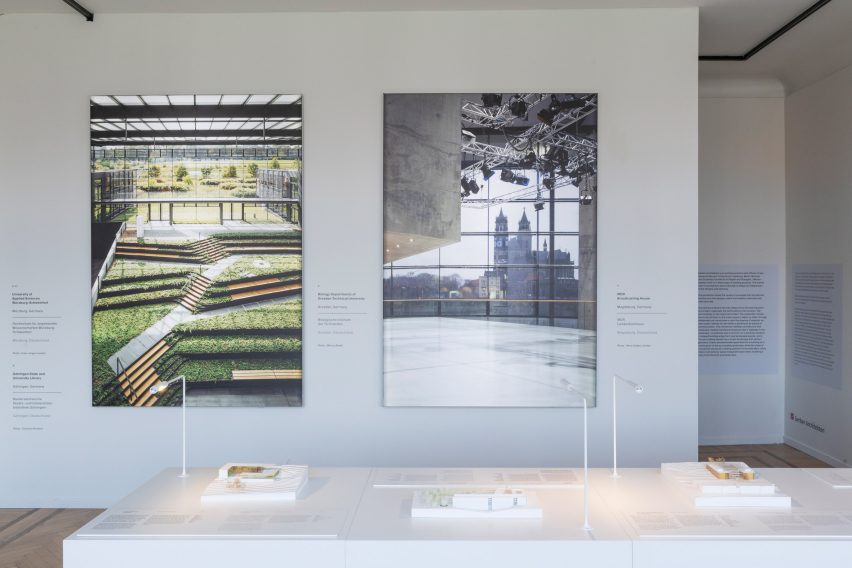
"With our architecture exhibition we continue the research on the fundamental topics of time, space and existence," Rachele De Stefano, head of architecture at ECC Italy explained.
"With this exhibition we hope to provide everyone with the opportunity to discover different voices and perspectives on architecture, while also raising awareness on the fundamental issues in contemporary architecture nowadays."
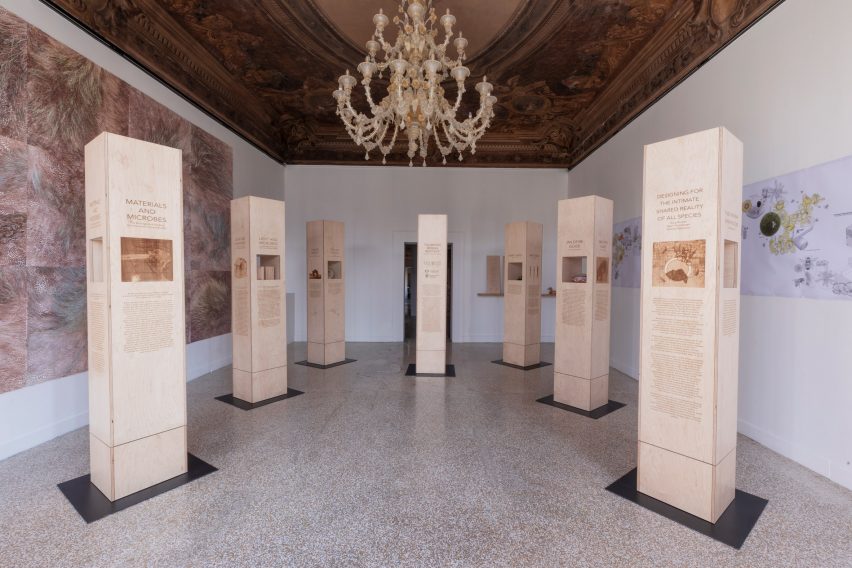
This year's edition of Time Space Existence will run between 20 May to 26 November 2023, at Palazzo Bembo, Palazzo Mora and the Marinaressa Gardens, in Venice, Italy.
To learn more about the European Cultural Centre's exhibition visit its website.
Photos by Federico Vespignani, Matteo Losurdo and Chiara Becattini.
Time Space Existence takes place from 20 May to 26 November 2023 at various locations across Venice, Italy. See Dezeen Events Guide for an up-to-date list of architecture and design events taking place around the world.
Partnership content
This article was written by Dezeen for the European Cultural Centre. Find out more about Dezeen partnership content here.